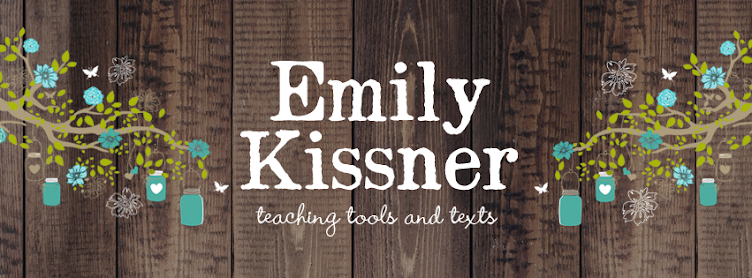
As Aidan and I were enjoying an Elephant and Piggie book a few weeks ago, I couldn't help but notice how much he was summarizing. As you probably know, the Elephant and Piggie books by Mo Willems are told entirely in dialogue. But Aidan started spontaneously narrating each page as we read. At the end, he went over and started telling my husband a pretty decent summary of what had happened in the book.
Ah-ha! If my five year old could do it, then surely this might be a way to help the fourth graders who are still struggling with summarizing. Some of them are still having trouble with getting the right blend of detail and generalization. Others are still trying to grapple with the general story structure. Still others include dialogue in their summaries, listing what the characters say instead of boiling it down into other words.
What would happen if I shared an Elephant and Piggie story? Would the kids laugh? I decided to give it a try. Well, my students were riveted. They started reading aloud with me as I read the book. I read the entire story once, then went back and modeled translating the action into a summary. The students chimed in with their own ideas.
While they were quite adept at coming up with feelings for the characters ("Elephant was frustrated when..."), there were some academic summarizing words that they just didn't generate on their own. Words like suggest and agree do not come easily for them. While they know what these words mean, they still weren't able to come up with them on their own. Think about how much more difficult this makes summarizing!
Our state prompts often encourage kids to include details from the "beginning, middle, and end" of the story. What this often leads to is students randomly picking details from the three parts of the story, instead of reflecting the whole structure of the story. As I modeled summary writing, I tried using Barry Lane's words of "set-up, mix-up, and end-up" to guide students to which parts of the story to include. How is the story started? What is the complication, or problem? How is the problem resolved? These cues helped students to see that they shouldn't choose events from their location in the story, but from their importance to the story.
After I modeled with two books, students worked on their own to write their own summary of a third. Our last was I Am Invited to a Party. In this book, Piggie gets an invitation, and Gerald makes many suggestions about what to wear--first, he asks if it's a fancy party, then a pool party, and finally a costume party. It was so interesting to see how the students dealt with this story. When I gave them a longer, more complex story three days later, their summaries improved greatly.
What did I learn from this? Well, next year I'm starting the year with summarizing these books! I've also seen the value of teaching kids words that are useful for summarizing--words like suggest and explain.
But it's also led me to some deeper thinking. What literacy activities did my students miss? What are they not getting at home, and how can I create reasonable approximations of these activities in my classroom? Thinking about these questions will be my work for the summer!
